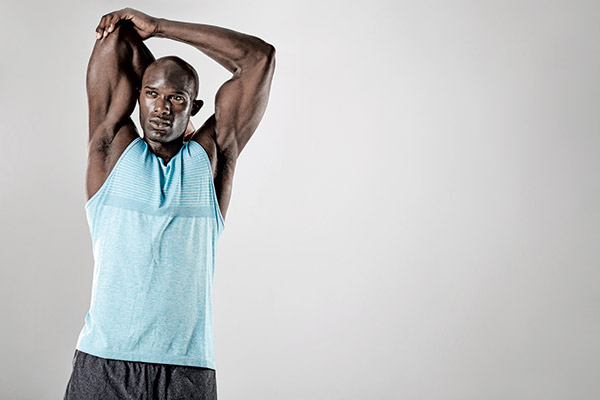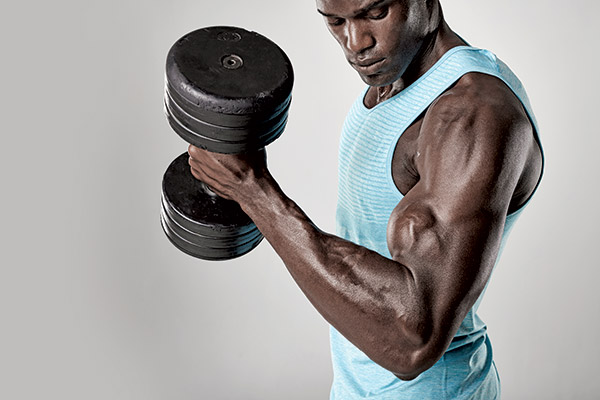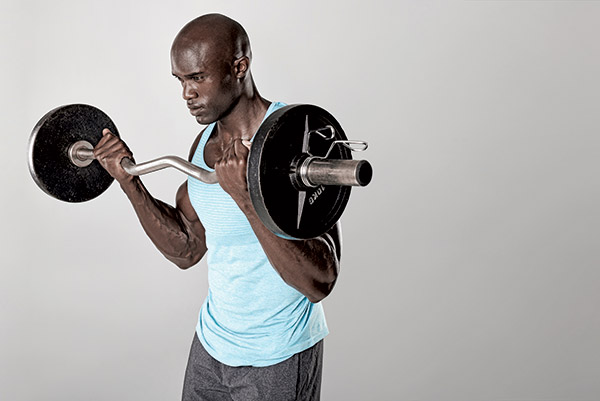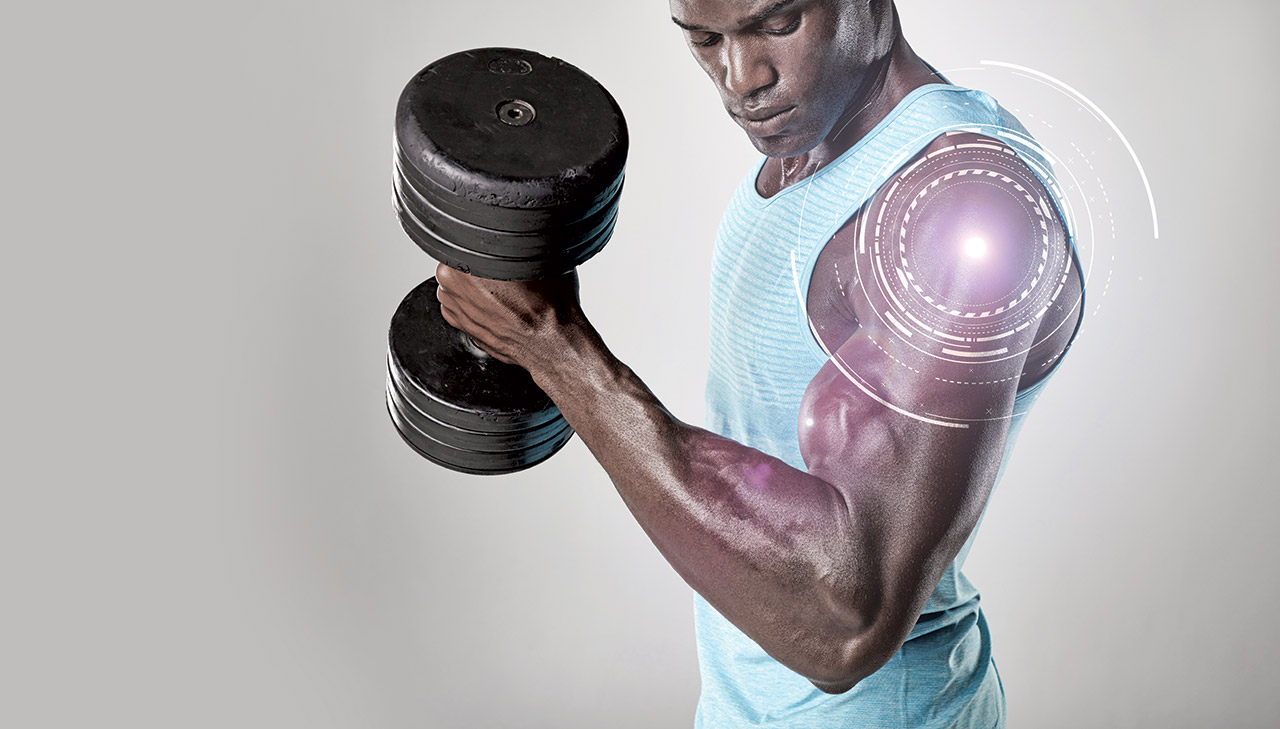One of the most common complaints from the serious gym-goer is “my shoulder hurts when lifting.” The smallest injury in your shoulders will mean your entire upper body training routine and sporting ambitions will suffer a setback. Here’s how to fix shoulder joint pain when lifting and make sure your boulder shoulders are impervious to everything.
4 Steps to fix your shoulder joint pain
When talking about pain, that includes both those little twinges felt mid-lift or the day after, to the discomfort of your shoulder joint just “feeling a bit stiff” all the way to a full injury-like a tear.
All too often, many lifters will consider those initial minor points of discomfort as just par for the course for lifting heavy.
Muscle soreness in your shoulders recovering from a heavy lift is normal and good. But persistent, sharp or unexpected pain is a warning that shouldn’t be ignored.
Perhaps it used to be the anterior delt on your right side would just act up every now and then after a lot of military presses.
But now you’ve been feeling more twinges in your first few sets of bench. And come to think of it… that last back workout, you noticed some weird tweaking in your pull-ups.
It’s time to pay attention, especially if you’re noting this painful annoyance carrying over into other workouts or even outside the gym, like after a long bout of driving. Here’s the definitive solution.
Step 1: Know your shoulder anatomy when you hit the gym
The shoulder isn’t built the same way as other joints because they usually have the benefit of larger bones for which more soft tissue can attach itself to create a stronger anchor.
The bones your ligaments attach to within the shoulder are smaller and have more ligament connection points between them.
The smaller the foundation, the more support needed by healthy tissue. And connecting into this complex of joints we have muscles from your biceps, triceps, back, chest and neck.
Dysfunction from these muscles and the movements of them, will naturally affect the mobility, strength, stability, and the overall health of your shoulders.
And if you’ve had a shoulder injury, you’ve most likely faced the frustration of how you’re going to not lose your strength in those larger areas. The goal is prevention.
Understand that most injury is preventable. And you don’t have to avoid heavy lifts or playing sports to stay injury-free.
But for as much as we love training those larger muscles, especially if your goal is aesthetics, taking care of the smaller muscles and keeping those tendons and ligaments in shape is non-negotiable for health and longevity.
Step 2: Stiff shoulder muscles + weak shoulder joints = shoulder injury
Many people assume a few light sets to start the workout off is enough to prepare the joint adequately for any heavy lift.
Even if you’re good about doing a couple sets external rotations before benching, know that it requires more than enhanced blood flow to your rotator cuff to ensure that the stabilizers will respond quickly and effectively to prevent your arm from losing control.
All it takes is one bad rep to have something go very wrong. The next problem is that most people aren’t aware enough of how the scapula should move around your body in any press, pull or rotation.
For someone who has good balance of musculature and control, upward and downward rotation, depression and retraction will not be a problem.
The thoracic spine will be able to flex and extend providing a stable base for your shoulder blade to slide easily over.

For example, if you’ve been working a desk job for 20 years and your upper back is chronically rounded forward, you probably don’t feel your chest, back and shoulder workouts hitting in the same places as you did when you were training in high school.
It’s not because you’re out of practice, it’s because you’ve developed tension in your thoracic spine and therefore lost stability through your shoulders.
Mobility is how well your body moves through the goal range of motion. Poor mobility means that your body will need to rely on compensations to achieve something similar to the desired end.
Stability is how well you control the movement and avoid unwanted movement. Imbalance or limitations in these areas are your first markers and actually predictors of future injury.
If your left shoulder has better mobility and stability than your right but you’ve been focusing primarily on bilateral lifts with bars or machines, your left will end up doing more work and your right shoulder is forced into tension and compensation.
In time, whether you’re throwing a ball or going for a PR, that imbalance on your right side will cause some kind of shoulder pain or injury.
Check your alignment to fix shoulder joint pain
Here’s a simplified checklist of alignment both relaxed and in motion. If you’re off in any of these areas, look at the muscles connecting to the imbalance.
Most likely, you’ll find adhesions on the tighter side of the joint and need for stability and retraining of proper movement on the opposite.
One side will become more tight and stiff, while the other becomes loose, weak, and basically forgetful of proper activation patterns.
Have someone film or take photos of you from various angles so that you see your shoulder joints and movement patterns objectively.
1. Standing relaxed
Your neck should be long, straight upper traps, not compressed or sloped. Your head should be right over your shoulders, chin parallel to ground and ears over shoulders.
Shoulders should be at equal height and anterior delts perpendicular to floor, not rounding forward toward the chest.
The inferior angle of your scapulae should sit relaxed and on most people relatively close to parallel to your ears.
If you’re rounded forward in your T spine, they will slump forward. Chronically pinched together is also unhealthy. The spine should have a very slight, but tall S curve. Too much arch or sway in the lower back will lead to shoulder problems.
2. During movement
Cervical spine should stay long and straight, keeping a “double chin” alignment. In pressing, pulling and rowing, shoulder blades should move easily and realign easily, without winging.
The head of your shoulder should be able to avoid rounding forward in rows and pulls.
Both arms should move uniformly without any sway to spine. Stand with your spine against a wall, feet a few inches forward. Raise straight arms into a Y position.

If you cannot touch your hands to the wall without bending at the wrists or elbows, your lats are too tight.
Pulldowns and any lat training exercises are bad news for your shoulders until you loosen them up and get your external rotation on point.
If your movements are clean, great. Keep it that way and allow for minimal deviation when you train. And it really should only be barely seen when you’re fatiguing in an exercise.
Don’t surrender form for gains. Your body’s only choice is to continue to build adhesion and scar tissue to create a false sense of security for joints it knows to be unstable.
Step 3: Fix your shoulder pain yourself
If you currently have shoulder pain, here’s a simple test to get an idea on severity. Extend one arm straight out in front of you, bend the elbow and place the hand on the opposite shoulder.
Elevate that elbow to eyebrow height. Any pain or tweaking? If so, have a physical therapist look at it. That’s a strong sign of impingement.
Make sure your shoulder is getting the proper training it needs before you put yourself at risk for more damage.
If you’ve cleared your impingement test, managing and eliminating shoulder pain is much easier than you think.
A) Stretching
Muscles don’t respond to quick, mindless stretching. If you’re cheating this, you will not recover without building adhesions on your soft tissue. It actually takes two minutes for tissue to fully stretch.
So, those 30 seconds you’ve been doing isn’t even breaking the surface. Make the time for these essentials, and don’t leave the gym without them.
B) Foam rolling
Breaking down those adhesions isn’t fun, but you can’t stretch them either. Think of a knot tied into a rubber band. You can pull the band to its limits, but the knot isn’t changing.
Pin a tennis ball between your shoulder and a wall. Follow the lines of the muscle to begin breaking down those painful points, moving your arm through various motions.
If you’re not breaking through restricted tissue before you train, you’re loading and hanging off scar tissue. Make it a part of every warm up.
C) Sports massage, muscle stripping/scraping, cupping and ART
Hire a qualified professional to gently but firmly break up the adhesions and scar tissue in those tight areas.
You’ve done the damage yourself, and sometimes you can’t undo it just by stretching and going easy on your lifts.

D) Shoulder health non- negotiable checklist
Release the adhesion before every workout. Stretch after every workout. Get chiropractic care until you are consistently moving well and passing the above tests.
See a specialized masseuse 2-4 times a month until the pain is gone and movement screens are clear then every 6-8 weeks for maintenance.
E) Supplement smart
Whey protein It promotes recovery and fuels your muscles for building. You can take it anytime of day or night, but also works well post-workout.
Glutamine
This can be taken anytime, but take 5-10g post workout as well as before bed for recovery.
Casein protein
This is worth taking pre-bedtime for muscles and recovery. Multivitamin It’s worth having this immediately upon waking to promote overall support and recovery.
As well as keeping you healthy and fulfilling most of your vitamin and mineral needs. Amino acids These can be taken intra workout for recovery.
This is also a supplement you can take during and throughout the day for muscle support and recovery.
The best brand for these is Dymatize which are created using Good Manufacturing Practices at certified facilities that give you the highest possible quality ingredients.
Step 4: Arm yourself with shoulder stability and range of movement exercises
The last part of this plan is making sure that you’re including more of the right exercises in your training.
Beyond that, making sensible adjustments to certain moves that could be aggravating your situation.
If your shoulders round forward in your rowing, don’t take your elbow past the mid-line of your body.
Focus on sliding the scapula back and down. Just make sure you are unloading the weight by reverse hammer curling, not dropping the weight down in front of you.
Underhand bench press or neutral dumbbell bench are also great options. Include rotator cuff training in your warm up every time you’re in the gym.
Even on leg day, a few sets of single arm Ts or lying dumbbell external rotation will pay off quickly.
Bring up the functionality of your plan by doing bottoms-up kettlebell carries and presses, landmine presses, and cross-body raises and abductions to create dynamic stability in the joint.
Know that stabilizers need high reps, but shouldn’t be trained to complete failure.
Overall your goal is to understand and observe, restore, and rebuild your shoulders.
Healthy shoulders make for stronger lifts and bigger gains with minimal off-time and less chance of injury.
For more content the how to fix shoulder joint pain when lifting, nutrition tips, and training advice, get TRAIN magazine direct into your inbox every month for free by signing up to our newsletter







